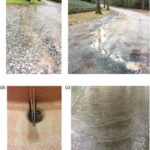この情報は、科学者が地球から非常に遠い場所にある新しい惑星を発見し、特定する方法を変える可能性があります。 The information could reshape how scientists detect and identify new planets very far from Earth
2023-02-07 ジョージア大学 (UGA)
◆1992年に最初の太陽系外惑星が発見され、現在5,000個以上が知られていますが、その中でも最も発見しやすい惑星があります。形成段階にある太陽系外惑星を見ることが難しいのは、主に2つの理由があるからだ。地球から数百光年と遠すぎること、そして惑星が形成される円盤が非常に厚く、地球から太陽までの距離よりも厚いことだ。データによると、惑星はこれらの円盤の中央に位置する傾向があり、惑星が蹴り上げた塵やガスのサインを伝えています。
◆今回の研究では、人工知能が科学者のこうした困難を克服するのに役立つことが示されました。
◆本研究の共著者である天体物理学助教授、系外惑星・惑星形成研究グループ主任研究員のカサンドラ・ホール氏は、「これは非常にエキサイティングな概念実証です」と述べています。「このAIは、コンピュータシミュレーションによって生成された合成望遠鏡データのみを用いて訓練され、その後、実際の望遠鏡データに適用されたことが大きな特徴です。これは、私たちの分野ではかつてないことで、ジェームス・ウェッブ望遠鏡のデータが届くと、大量の発見ができる道を開いています。”
◆研究チームの研究は、観測データに対する将来の応用のための具体的な基盤を開発するためのもので、シミュレーション観測を用いて、この手法の有効性を実証しています。
<関連情報>
- https://news.uga.edu/researchers-focus-ai-on-finding-exoplanets/
- https://iopscience.iop.org/article/10.3847/1538-4357/aca477
機械学習によるALMAデータ中の隠れた太陽系外惑星の発見 Locating Hidden Exoplanets in ALMA Data Using Machine Learning
J. P. Terry, C. Hall, S. Abreau and S. Gleyzer
The Astrophysical Journal Published 2022 December 23
DOI:https://doi.org/10.3847/1538-4357/aca477

Abstract
Exoplanets in protoplanetary disks cause localized deviations from Keplerian velocity in channel maps of molecular line emission. Current methods of characterizing these deviations are time consuming,and there is no unified standard approach. We demonstrate that machine learning can quickly and accurately detect the presence of planets. We train our model on synthetic images generated from simulations and apply it to real observations to identify forming planets in real systems. Machine-learning methods, based on computer vision, are not only capable of correctly identifying the presence of one or more planets, but they can also correctly constrain the location of those planets.



